Gorilla Photography Tips
We sat down with award-winning primate photographer Nelis Wolmarans to talk about his top gorilla photography tips as well as the upcoming photo safaris he will be hosting for Pangolin Photo Safaris.
Nelis has been in the industry of hospitality, travel, photography, wildlife and conservation for over 23 years and brings a personal touch to every safari experience he embarks on, making sure to share his incredible love for gorillas wherever he goes.
In 2018 he won the prestigious Nature’s Best Photography Award with a stunning image of a Gorilla taken on one of his many treks.
In this article, you will learn everything you need to know about photographing primates in Africa as well as what we have planned for a very special photo safari with Nelis to Uganda next year. Already know you want do this safari with Nelis, learn more here!

Table of Contents – The Questions we asked Nelis.
- How many gorilla encounters would you say you have had?
- Where are the best places to see and take photos of mountain gorillas?
- Are there more than one species of mountain gorilla in the region?
- What are the differences between a western lowland gorilla and a mountain gorilla?
- What is the difference between a blackback and a silverback gorilla?
- When is the best time of year to photograph gorillas?
- Do you have an all-time favourite gorilla?
- What lenses should you take on a gorilla expedition?
- What other gear do you take with you?
- What does a typical day look like on a gorilla trip?
- Is one hour enough and would you suggest doing more than one permit?
- How many people are allowed to go on each gorilla trip?
- How long does a gorilla trek take?
- How do they allocate which gorilla group you will visit?
- How close can you get to them?
- Do the gorillas ever interact with you?
- Do you employ a porter to help with your camera gear?
- What are the price differences for doing gorilla treks in these countries?
- Would you suggest adding time to see other primates like chimpanzees on your safari?
- Tell me about your collaboration with Pangolin.
11 years ago my wife and I walked up the footpath to Sabyinyo Silverback Lodge, a location just adjacent to Volcanoes National Park in Rwanda which became our home for the 3.5 years that followed. Two weeks later I went on my first gorilla hike and fell in love with a species unlike any other. Here I am today, more than 90 gorilla treks later and the experience is no less exciting than it was with my very first expedition when I got close up and personal with these wild gorillas. Talk about living in a dream world!

It is incredible to think that the world’s entire mountain gorilla group population can be found in just three locations in Central Africa: Uganda’s Bwindi Impenetrable National Park and Mgahinga Gorilla National Park, Rwanda’s Volcanoes National Park, and the Democratic Republic of Congo’s Virunga National Park. Therefore, any one of these places makes for unique and beautiful photographic opportunities. Where the price of the gorilla permit usually being the biggest differentiation.
I am excited to be able to explore more of Bwindi Impenetrable National Park with Pangolin as it boasts incredible backdrops for beautiful wildlife photography and gorilla photography. I think it is the perfect place for photographing gorillas.
The mountain gorilla is a subspecies of the eastern gorilla. A large portion of them can be found in the forest of Bwindi Impenetrable National Park where will be hiking. The remainder lives in the Virunga Mountains. The Democratic Republic of Congo (DRC) is the only country that has both the Western, Eastern lowland and mountain gorillas. Additionally, Grauer’s or Eastern Lowland Gorillas are only found in DRC too.

The Western Lowland gorilla can be found in tropical lowland forests and prefer a more heavily forested and flatter habitat whereas mountain gorillas can be found on the rocky slopes of dormant volcanoes and cloud forests – they are found in higher altitudes.
Your lowland gorillas are shorter and have softer fur whereas mountain gorillas have longer and shaggier-looking fur. The lowland gorillas are also smaller than the mountain gorillas and are about a metre shorter when standing. With the males, elderly mountain gorillas maintain their silver fur while elderly male lowland gorillas will often the grey hair on their backs and hips.
A black back is an 8 to 11-year-old male gorilla and is often extremely boisterous, like a typical teenage boy. It’s only after 12 years that a male gorilla starts to develop that silver colouring across the back which is then when they are referred to as a silver back and considered an adult.

On either side of the rainy season! I love that period, the end of January, more so February going into early March. Then again from the end of September, October, and November. The main reason for this is because – when you have good cloud cover, atmospheric low light and overcast conditions associated with the rainy season, it makes it easier for the camera to balance out the whole scene of the background and the gorilla group.
During the dry season, you have a lot of light against a bright green background and dark subjects so it’s hard not to blow out the scene completely. You have to juggle between a beautifully exposed gorilla and blown-out greenery.
In addition to that, with the gorillas and direct sunlight, the ends of their fur and their noses tend to blow up very quickly. What the gorillas do with bright light is use their eyebrows to cover their deep eye sockets (almost like we use peak caps!) so you don’t see any of theirs when it’s bright out.
Hence, when there is good cloud cover, you get these incredible moments of the gorilla looking straight at you with their emotive eyes. So photographic purposes you would want to avoid trekking in the dry season!
I did, but sadly passed away when his family got struck by lightning not long ago. He was a silverback gorilla called Munyinya and was from the Hirwa Mountain Gorilla family. Munyinya is also on the cover of the book, remembering great apes. There is another big mountain gorilla coming though who is called Muhoza that I love to photograph.

You will speak to 99 % of photographers who do the trek and they will tell you there is only one lens to take and that’s the 70-200 f2.8 I agree – it is a great lens to take and it definitely serves its purpose for gorilla photography. You won’t regret the images you shot with that lens. That being said, it also depends on what you are looking to achieve with each scene and how you want to photograph the gorillas and also if you are happy to change lenses to get the various perfect shots.
I take the 200-400 f4 with a built-in 1.4x extender and I use that honestly 85 – 90% of the time over the 70 – 200. The nice thing with the 200-400 is that you can stand back and not encroach on the gorilla while still getting really beautiful detailed shots. Additionally, with a tighter zoom, you eliminate a lot of the distracting factors as well so you can really zoom in on those intimate moments that are so iconic with gorilla photography. For example, the contact between a mom and her baby.
I don’t use any other supports or filters. Images are all hand-held, though I would suggest for people who struggle to keep it steady at low shutters to use a monopod. Tripods are a big no, take too long to set up and the feet always get entangled in the vines which just leads to frustrations. I used to carry a waterproof lens cover, but with the new bodies and lenses being so well weather sealed, I stopped using those.
When I carry 2 bodies and lenses, I use the Spider Pro Dual Camera Holster. This piece of equipment has come in very handy in the past. To carry my gear up the mountain, I use a fully waterproof PVC bag. This not only keeps the gear dry but also my clothing and other items.
It depends on how far away your lodge is from the park entrance. Your day will generally start around 05:30 and at 06:00 you meet for breakfast and then at 06:30 you make your way to the park office. Once you get to the park headquarters, you are allocated the gorilla family that you are going to go and see as well as the guide that will take you up, thirdly, you will also meet the other people that are going to be with you for the day.
You will then be allocated your gorilla family and region and then they will give you a bit of history of the park as well. From the park headquarters, you will then get back into your car with your guide and then you drive to the closest point to the specific region and gorilla family you have been allocated. That’s when you get handed a walking stick to make use of and that’s also where we hire the porter for your camera gear. The first 15 – 20 minutes of your hike is through farmland, till you reach the park boundary, which is a 76 km stone wall that runs all the way from the Rwanda – Uganda border to Rwanda – Congo border. The main purpose of this wall is to demarcate the national park from the adjacent farmland. The wall is also there too for the most part keep buffalo and elephants inside the park to avoid the farmlands getting damaged.
Once you reach the stone wall, we just do a little recap on park etiquette so talking a little softer, everyone sticking together and also the way to behave infant of the gorillas. From there, we start the climb. There is a tracker that stays with the gorilla family for all daylight hours, so the guide that we pick up from the park office is in radio contact with the tracker, these trackers will then radio in the fastest route for us to walk. Then when we get to the meeting point, walking sticks, backpacks, food and water, everything stays behind. It’s just the group, your cameras, the trackers and then you’re in with the gorillas for one hour. You then come back, say goodbye to the trackers and then make your way back down again. You are generally back at your lodge between 12:30 and 13:30. This is a great time to review your images and see if you are happy with the photographs you shot.
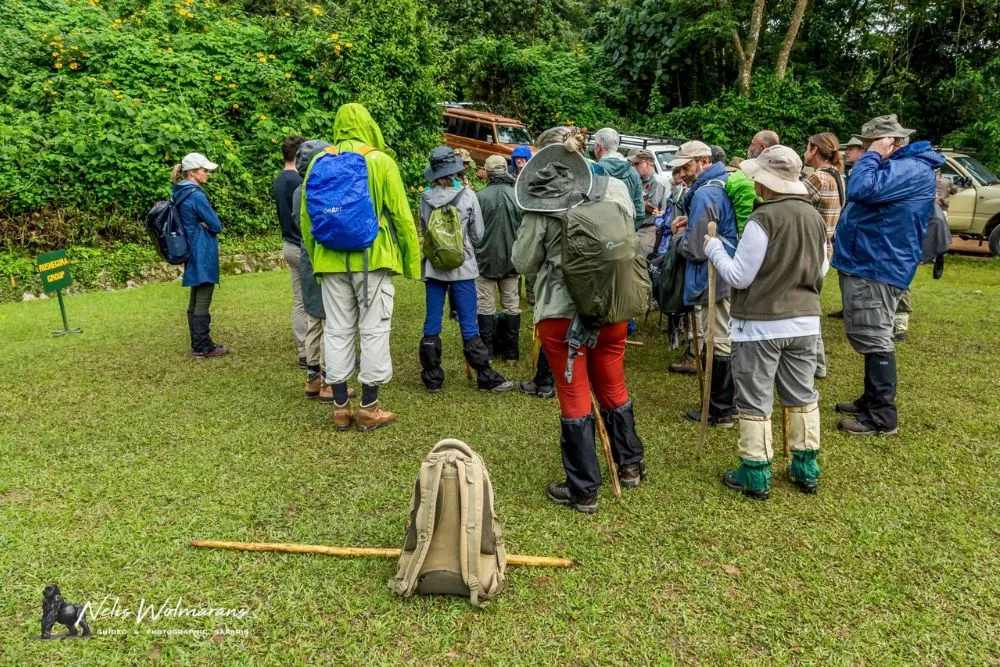
That one hour gives you ample time to photograph at the location. However, I always tell my friends – Two gorilla treks, not one! This is why in our safari we will be doing two with the gorillas.
During your first trip, you are always thinking too much and are maybe worried about being so close up to the gorilla. It’s only halfway through that first hour that you actually stop and realise how amazing this opportunity is.
Then day two is all about really enjoying the experience – you know exactly what to expect and you can just be fully emerged in the experience. It’s a chance to not miss photos of these beautiful animals. Plus a good opportunity to use the tips from the day before.
It is 8 people per group (including myself). So if you are a smaller group there is a high chance that your group will be filled with other people. The reason that it is limited to 8 people per gorilla family group is to reduce behavioural disturbances of tourists to the gorillas in an effort to maintain conservation measures as well as to minimise the risk of human-borne diseases being exposed to the gorilla and lastly, to conserve the wild forest and the other creatures that live there.
You will be hiking for between one and six hours to see where the gorillas live. Not to worry, every moment will be worth it for the images! The length will vary based on the location the gorilla was last seen in the jungle and how far away they are from the start. Your fitness level also links into this – although the guides will try and recommend the shortest route for all tourists, there is still a bit of walking to do. I can promise you though, as soon as you see your first gorilla you will forget all about your tiredness and just focus on the moment. That first encounter with a gorilla is something you will remember for the rest of your life.

The permits are divided up into the various regions of the park and then on the day of the journey, you are allocated a family by park officials. There are various factors that are taken into consideration when a group is allocated a family. Namely the general level of fitness in the group as well as the age of people in the group.
The general ruling is no closer than 10m. It used to be 7m before the pandemic, but to be fair – no one ever told these gorillas the difference between 7 and 10m! However, what is said and done is sometimes not as easy as black and white. The vegetation can also sometimes be incredibly dense, so you can only step so far away from them too. It is definitely a unique experience to be so close to them and an image you won’t forget anytime soon.
The young gorillas are incredibly inquisitive and playful, they will keep coming closer to you and often you will be within 1 or 2m of them – this can include the big silverbacks but don’t worry! I truly believe that the term gentle giant was really made for these gorillas. If they do come closer, it’s a memory you will never forget.
Yes, for the trip up I will always use a porter. Not only is it a great way to support the local community but it also makes the trek a little easier! The community really appreciates it as well. So we employ porters to take all the camera gear up to where we meet the trackers and once we get to them that’s when we leave the porters, walking sticks, backpacks etc. with them. Then it’s just you, your camera gear and 2 – 3 of the rangers as well as the park guide that goes with you into the last 50m of the trek to where the gorillas are. So yes, if you want to take two bodies and a few lenses, you won’t have to carry it all yourself!

Uganda, Rwanda and the jungle of the Democratic Republic of Congo are popular destinations for ecotourists as these countries are home to the world’s largest population of mountain gorillas. Not only are these trips amazing opportunities to get close up to these incredible yet highly endangered species but also help fund the conservation of the gorillas and help protect them for years to come. 10% of the gorilla permits cost goes back to the communities and rangers.
In order to see the gorillas, you do however need a tourist’s permit, these permits are $700 in Uganda and $1500 in Rwanda. It is, for this reason, we chose to host our adventure in Uganda so that you can do two gorilla treks for the price of one in Volcanoes National Park in Rwanda. Please note that Virunga National Park in the Congo is however still closed so it is not possible to be in the Virunga mountains until further notice.
Yes definitely. On our expedition, we will explore the Kibale Forest National Park which is home to over 1500 chimpanzees! This park is also famous for having the most diverse and densest population of primates in East Africa. We are going to search for vervet monkeys, olive baboons as well as red colobus monkeys and other wildlife. This is going to be a primate lover’s dream so get your cameras ready.
I am excited to announce that coming September 2023, I will be hosting a week-long Uganda Primate Safari for Pangolin. As a group, we will start with two nights in Entebbe, and of that, we will spend one full day at the Mabamba Swamps where will be photographing the sought-after Shoebill Storks.
From there we will travel to the famous Bwindi Impenetrable National Park where we will stay in the Buhoma Sector and do two amazing gorilla treks.
Next up is a flight to the jungle of Kibale Forest to do a Chimpanzee trekking habituation experience (exciting several hours with the Chimps) before heading back to Entebbe.
Although there will be a lot of travel, afternoons will be a time for editing your photos and processing them. Especially after the first meeting with the gorillas at their sites, this gives us an opportunity to discuss and make sure you get your best shots the next day.


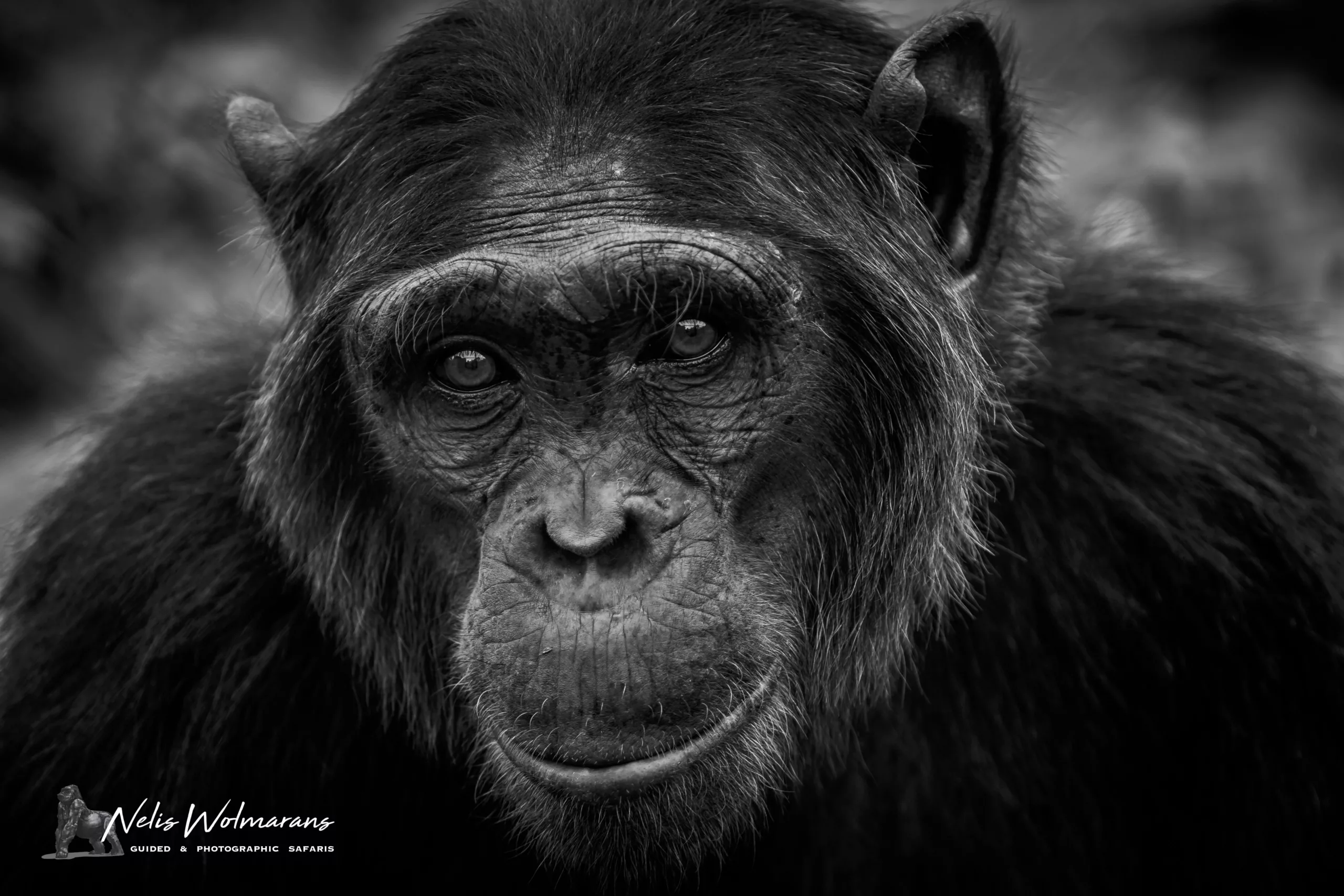
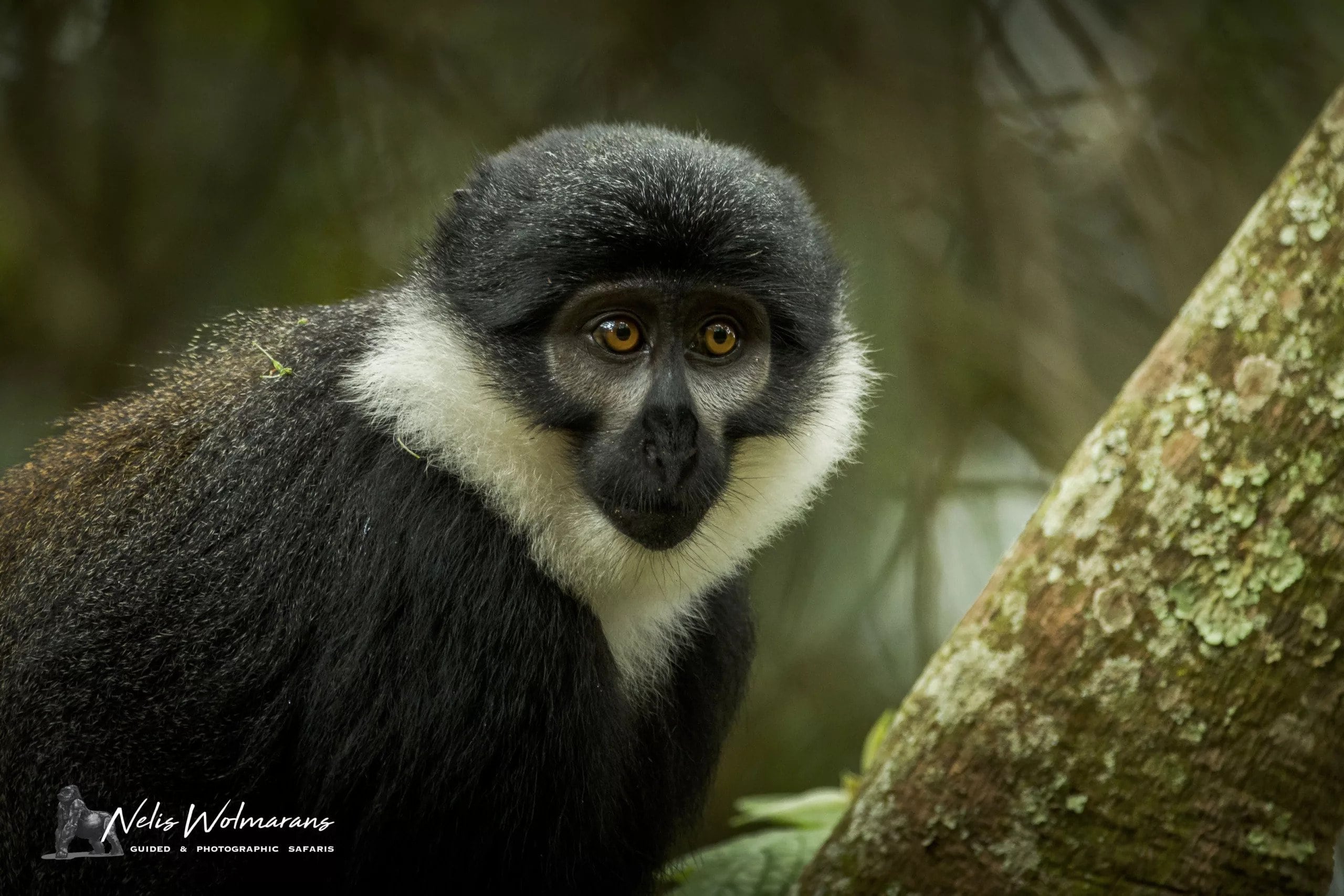
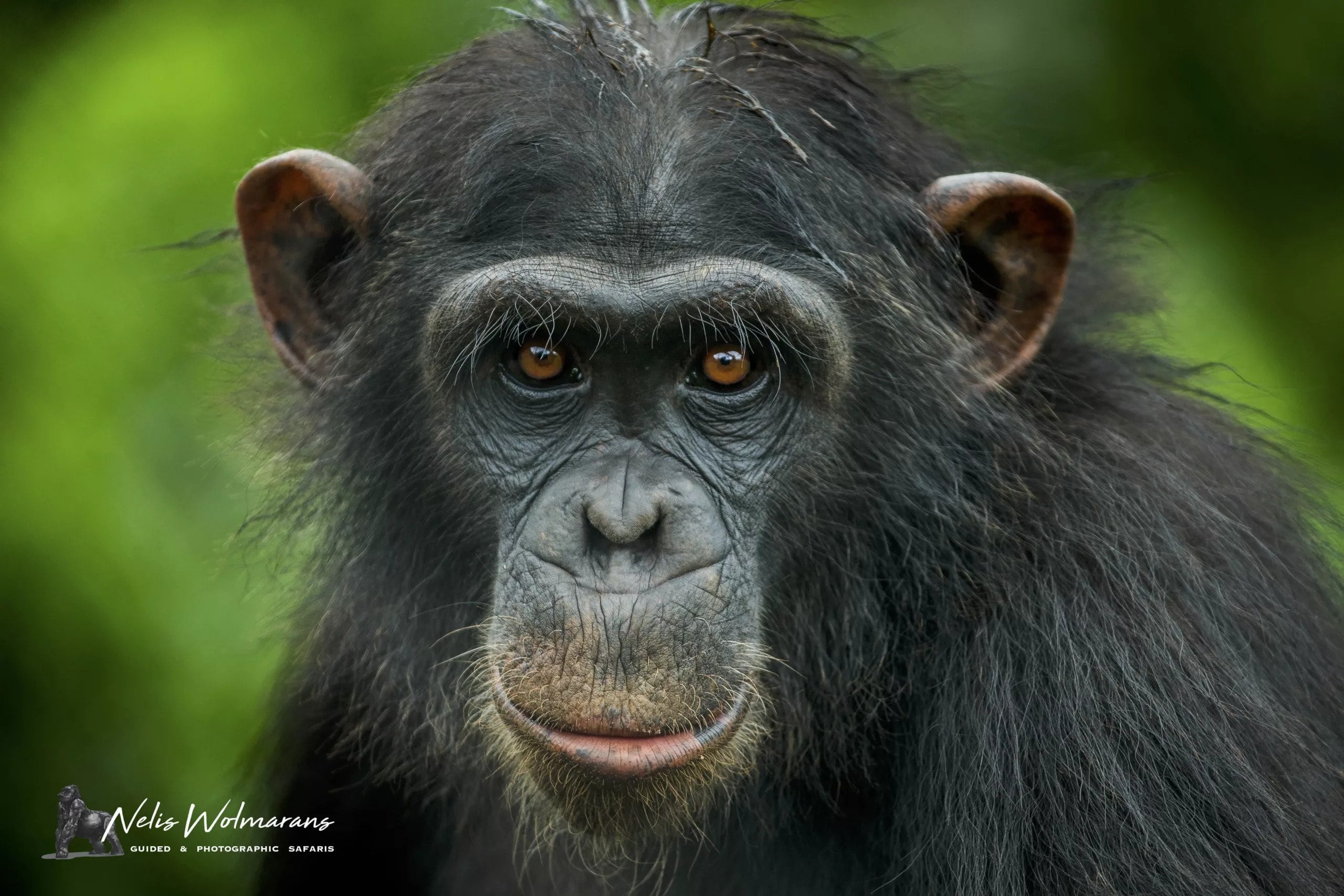
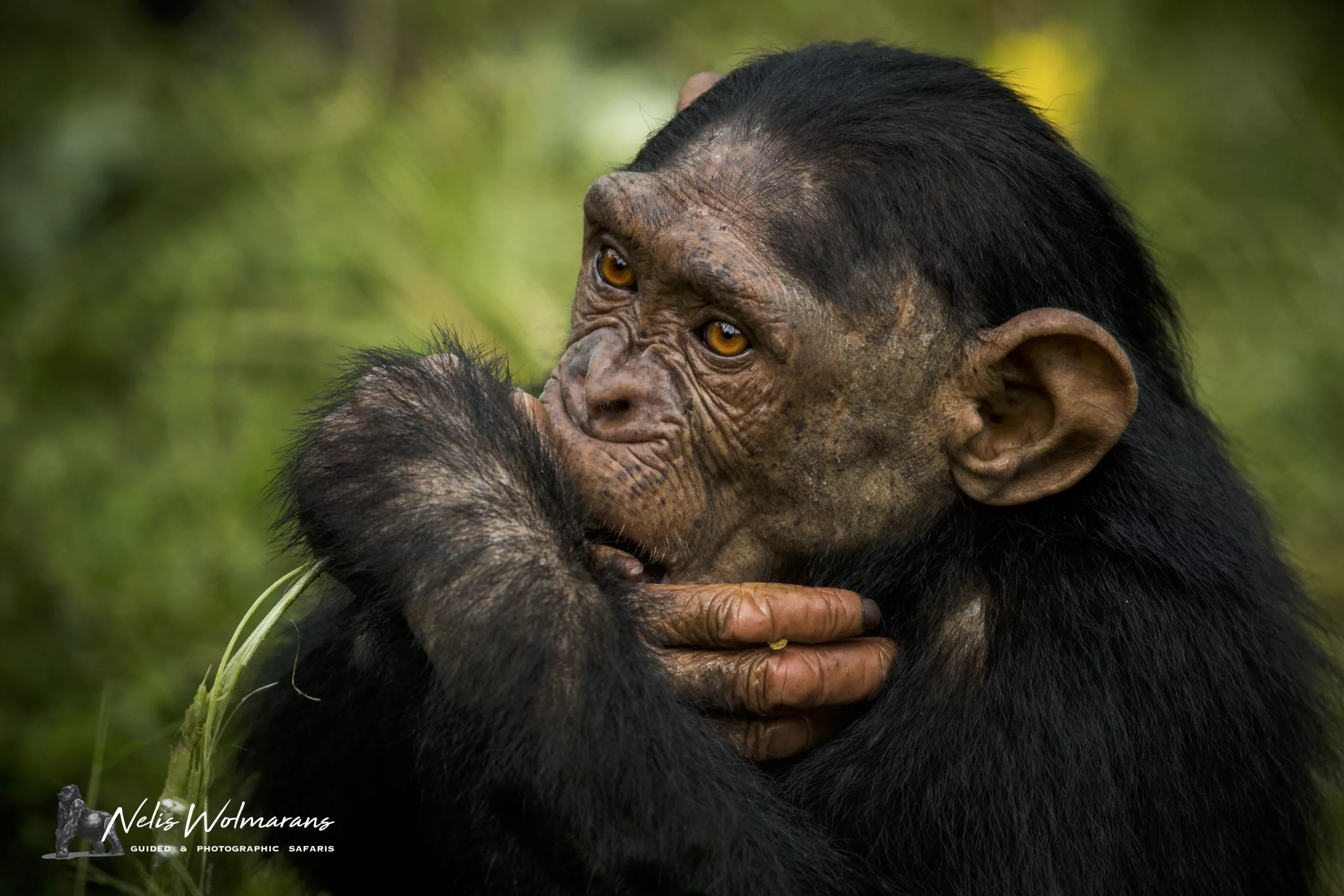
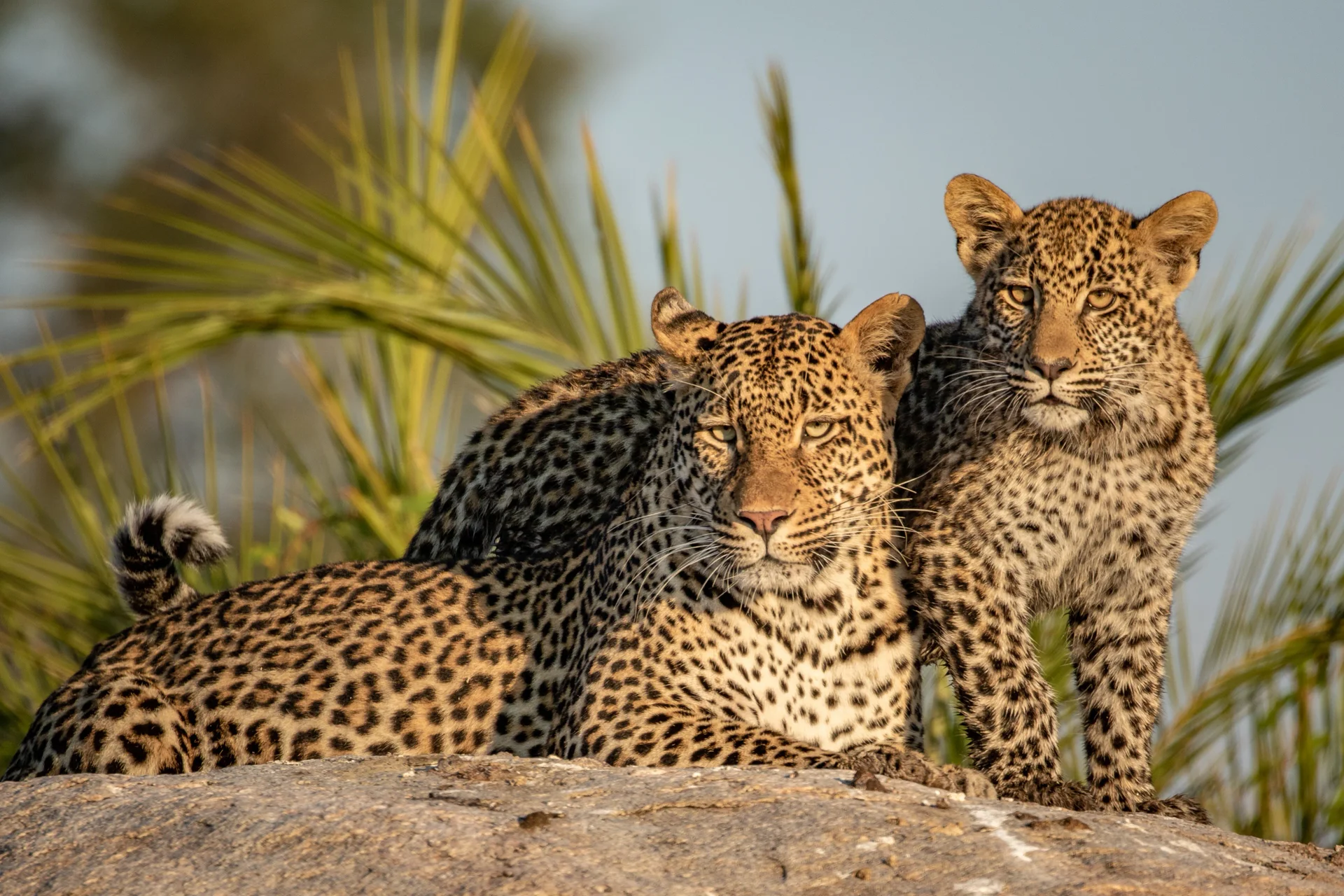
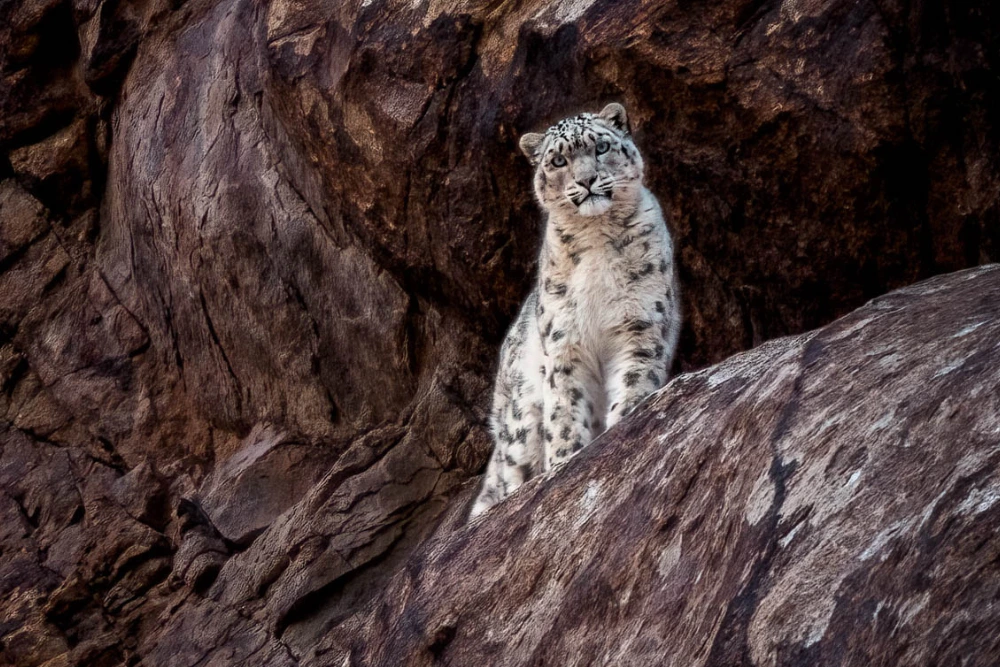
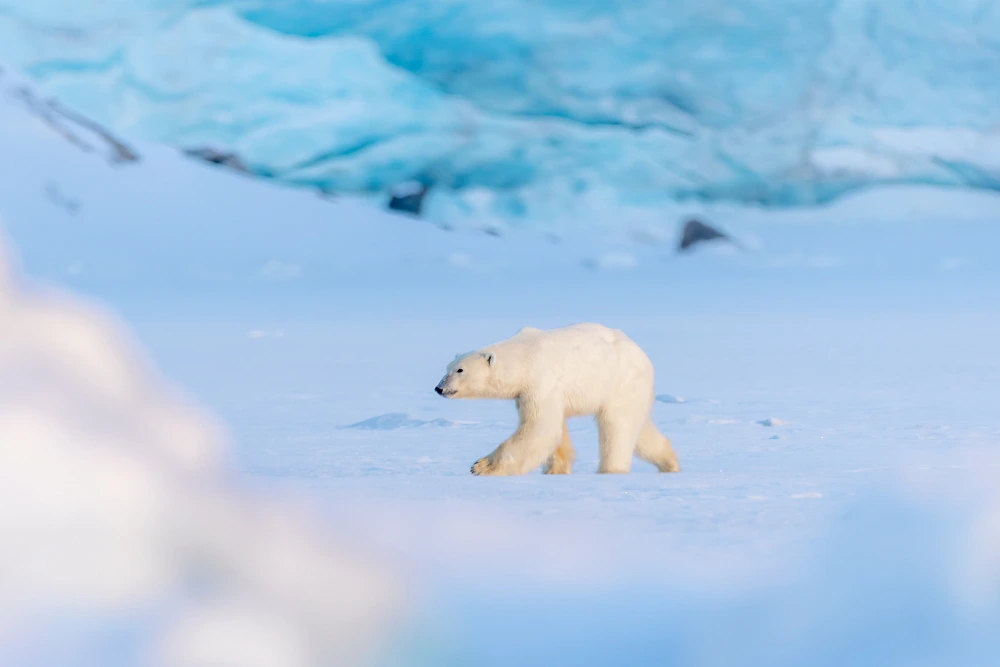
Leave A Comment
You must be logged in to post a comment.